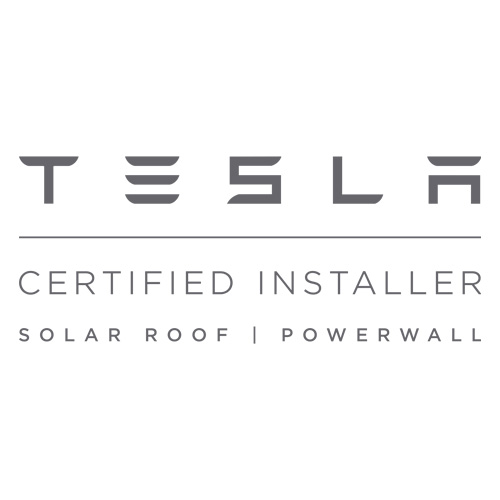Does Mold Grow Under Solar Panels?
Mold growing under solar panels is a real problem that can cause serious damage to the roof and the panels themselves. The mold, mildew, and other fungi can spread quickly, blocking the sun’s rays and reducing energy efficiency. In order to protect your investment in solar power, it’s important to understand how mold grows under solar panels and what measures you can take to prevent or stop it.
Mold grows in damp, dark areas where there is little air circulation. Solar panels are stationary parts of your home’s exterior that block airflow, making them ideal breeding grounds for mold spores. This is especially true if you live in a humid environment or one with a lot of moisture in the air. When combined with the heat generated by the sun hitting your roof deck, it creates an ideal environment for mold growth.
1. What Is Mold?
Mold growing under solar panels is a real problem that can cause serious damage to the roof and the panels themselves. The mold, mildew, and other fungi can spread quickly, blocking the sun’s rays and reducing energy efficiency. In order to protect your investment in solar power, it’s important to understand how mold grows under solar panels and what measures you can take to prevent or stop it.
Mold grows in damp, dark areas where there is little air circulation. Solar panels are stationary parts of your home’s exterior that block airflow, making them ideal breeding grounds for mold spores. This is especially true if you live in a humid environment or one with a lot of moisture in the air. When combined with the heat generated by the sun hitting your roof deck, it creates an ideal environment for mold growth.
The most common way to promote mold growth under solar panels is through water accumulation or leakage due to improper installation or poor maintenance of the system. If any water gets trapped beneath the panels and isn’t cleared away quickly enough, it will create a conducive environment for mold spores to grow and thrive. Additionally, any debris left on top of or around the panel such as leaves or twigs could be harboring some form of fungus ready to spread out from beneath your panel once given access.
In order to reduce your risk of having mold growth beneath your solar panels, there are some proactive steps you can take including:
1) Regularly cleaning the area surrounding your solar panel array – remove debris such as leaves and twigs which often accumulate on top of and around them;
2) Ensuring that all seals around your panel array are properly sealed;
3) Inspecting for any signs of cracking or warping on your roof deck that could lead to water seeping into crevices;
4) Ensuring proper ventilation underneath and around each panel array so that warm air generated by sunlight doesn’t become trapped;
5) Checking regularly for any signs of accumulation around each panel;
6) Installing a vapor barrier below each panel array and making sure it remains intact over time;
7) Ensure downspouts are diverting water away from the base of each panel array;
8) Performing regular inspections after major weather events such as hail storms or heavy snowfall;
9) Maintaining good attic ventilation throughout your home year round so that warmer air near the roof does not accumulate near the bottom edges of each array;
10) Taking quick action if any signs of moisture are found underneath any individual solar panel arrays. This includes removing wet insulation material immediately and drying out wet wood components before reinstalling them back into place.
It may be necessary to use anti-fungal treatments if you find yourself facing a full-blown outbreak beneath your solar system -specialized UV lamps installed directly behind each affected area can help kill off existing molds while preventing new colonies from forming again in future months. Investing in these preventive measures now will save you time and money long term due to reduced maintenance costs associated with dealing with these issues further down road later on when they inevitably become more problematic than they were originally had they been addressed initially when first spotted during routine inspections/maintenance checks instead!
2. What Causes Mold To Grow?
As we all know, mold can be a dangerous and destructive thing. It can cause serious health problems, and it’s even been linked to some types of cancer. In this blog, we’re going to discuss what mold is, how it grows, and how you can prevent it from growing under your solar panels.
First off, what is mold? Mold is a type of fungus that grows in moist environments – like bathrooms or kitchens. It needs three things to grow: moisture, a food source (usually something rotten), and warmth. Solar panels are often installed in humid and warm locations, which makes them perfect for mold growth.
To prevent mold growth under your solar panels, you need to make sure that the panels are installed correctly and that the area around them is well-ventilated. Additionally, you should keep the area clean by wiping down surfaces regularly with a bleach solution or an anti-mold cleaner. If you do find mold growing under your solar panels, it’s important to remove it as quickly as possible – otherwise the mold will spread and create a hazardous environment for both you and your guests.
Learn The Facts About Mold, Causes, And Remedies
Mold is a common problem in homes and can cause serious health problems if left untreated. In this blog, we will provide you with the facts about mold, its causes, and the various remedies that you can use to clean it up.
First, what is mold? Mold is a type of fungus that can grow in many different places, including under solar panels. It’s important to be aware of this because mold can cause electrical issues and even lead to structural damage.
Next, where does mold commonly grow? Mold typically grows in moist environments such as bathrooms or kitchens. This is because these areas tend to have high levels of humidity and moisture.
Third, the difference between mildew and mold is important to understand. Mildew is a type of mold that occurs on surfaces such as fabrics or wood furniture. It’s not harmful on its own but can produce allergens that are harmful when breathed in or contact with skin. Mildew usually doesn’t produce toxic substances like mold does.
Fourth, the health effects of Mold are both physical and mental. Physical effects of Mold include allergic reactions like asthma or eczema, as well as more serious conditions like pneumonia or meningitis. Mental effects of Mold can include anxiety, depression, or even post-traumatic stress disorder.
Finally, how to clean Mold from your home depends on the type of mold you have: black mold needs to be removed using a bleach solution while brown molds can be eliminated using an acid solution. Both solutions need to be diluted before use so that they’re safe for your home’s walls and furnishings. In order for Mold not to return after it’s cleaned up, it’s essential to take steps such as sealing all cracks and ventilation openings in your home. Finally remember – if you think that there may be any signs of Mold present in your home – always call an expert!
3. Is Mold Dangerous?
When it comes to mold, you always have to be aware of the potential dangers. Mold can produce dangerous chemicals called mycotoxins, which can cause respiratory problems and even death. Solar panels are a particular risk for mold growth, as they offer an ideal environment for the fungus to flourish. However, there are ways to prevent this from happening.
First and foremost, make sure that your solar panels are regularly cleaned and inspected. This will help to keep the panels in good condition and free from any harmful mold growth. In addition, make sure that you install a properly designed ventilation system in your home or office so that toxic fumes from the mold don’t spread throughout the building. If you do find any mold on your solar panels – be sure to remove it immediately! Mold can be a serious health hazard if left unchecked, so take action right away!
4. What Is Mold And What Does It Do?
Mold is a type of fungus that can grow anywhere there is moisture and warmth. It can be found indoors or outdoors, and it often grows in damp areas such as bathrooms or basements. Mold needs four things to grow: water, food, warmth, and oxygen. Solar panels do not provide any of these things, so mold will not grow on them. However, if mold is already growing on the solar panels, it can continue to do so and may cause damage.
If you suspect that mold is growing on your solar panels, you should contact a professional to have the mold removed. Mold may cause electrical problems with the solar panel system and could even lead to a fire. If you think that mold might be affecting your health in any way, please contact your doctor as well. By taking action now you can prevent potential damage from happening and potentially saving yourself some money in the process!
5. How Do I Prevent Mold From Growing Under My Solar Panels?
There’s nothing more frustrating than finding mold growing under your solar panels. Mold can be a major health hazard, and it can cause serious damage to your solar system. In this section, we will outline the different ways that mold can grow under solar panels and how you can prevent it from happening.
Mold can grow under solar panels in warm, humid conditions if the conditions are right. Keep the area around your solar panels clean and free of debris to help prevent this from happening. If you live in a warm, humid climate, consider installing a dehumidifier to help keep the area around your panels dry. Inspect your solar panels regularly for signs of mold growth – if you do find mold growth, clean it immediately! Finally, be sure to address the conditions that allowed the mold to grow in the first place so that it doesn’t come back again.
Ways To Keep Mold Out Of Your Solar Panel Area
Many people are concerned about the possibility of mold growing under their solar panels. This is a valid concern, as mold can cause significant damage to the panels and your home. Here are some ways to keep mold out of your area and protect yourself and your solar energy system.
First and foremost, keep an area around your solar panels clean and free of debris. This includes anything that might be on the ground or in the air – nothing should be left behind. If you see any signs of mold growth, such as black spots or growth on the surface of the panel, take action right away by cleaning your solar panel with a mild solution of soap and water.
Inspect your solar panels regularly for signs of mold growth. If you notice anything suspicious, contact a professional to have it checked out. Mold can grow rapidly in moist environments, so it’s important to monitor for signs regularly. And if you do detect any signs of mold growth, remember to clean your panel immediately!
If you’re using a traditional solar panel rather than one with a modern coating, be sure to clean it every few months with a solution made up of water and soap. You may also want to consider using an anti-mold coating on your panels if they are not already coated in this way. Mold is less likely to grow on these types of panels due to their design features.
Finally, make sure that leaks or water damage are addressed promptly in order to prevent moisture from building up over time and causing damage down below in the home wiring system or even structural damage in your home itself! And last but not least – enjoy those sunny days without worrying about pesky mold ruining all your hard work!
6. What Should I Do If I Find Mold Growing Under My Solar Panels?
The first step is determining what type of mold is causing the issue. Different types of molds have different characteristics and may require different treatments for removal. Generally, molds look like green or black spots on walls and other surfaces. Some more common types of molds, such as Aspergillus and Stachybotrys, may also have a musty smell.
Once you’ve identified the type of mold present, it is important to determine what caused it to grow in the first place. The most likely cause for mold growth under solar panels is moisture accumulation due to condensation or leaking pipes. To fix this issue, you will need to eliminate or reduce the source of moisture by sealing any cracks or crevices in walls or ceilings where moisture could be entering, repairing any leaking pipes or fixtures, and improving ventilation so that air can circulate better throughout your home.
It may also be necessary to clean up existing mold growth before attempting remediation efforts. It’s important to wear protective clothing while cleaning up any mold growth such as rubber gloves and goggles because certain types of molds can irritate skin and eyes when exposed directly without protection. You should also use an EPA-approved cleaning solution to safely remove the mold from surfaces around your home. It’s best not to use any bleach-based products as these may damage solar panel components over time if used regularly for cleaning purposes near them.
Once you’ve eliminated the source of moisture and cleaned up existing mold growth, you can take steps to prevent further issues by regularly inspecting for new signs of mold growth around your home – especially around places prone to dampness such as bathrooms – and addressing any problems with ventilation that might be leading to high humidity levels indoors which can exacerbate already existing issues with condensation build-up near windows and other openings in your home where warm air meets cold air outside causing water droplets (condensation) form on windowsills etc… Additionally, using dehumidifiers may help keep indoor humidity levels down which helps reduce chances for future mold development around your home including underneath solar panels if present there too!
7. Solar Panels And Mold Final Thoughts
Solar panels are a great way to reduce your electric bill and save money on your monthly bill. However, solar panels do not operate well if they are covered in debris. This can include anything from leaves to dust, and mold can grow under solar panels if the conditions are right.
Mold is not a common problem with solar panels, but it is possible for it to occur. If mold does grow, it can be cleaned with either bleach or vinegar. Bleach is more effective at removing mold, but both cleaners work well at removing the fungus. If you do notice mold growing on your solar panel, don’t hesitate to clean it up – it’s an easy and affordable solution that will help your solar panel work better and longer!
Review Of Solar Panels And Mold
If you’re thinking about installing solar panels, it’s important to keep in mind the importance of keeping them clean. Mold can grow on solar panels in a number of ways, and this can eventually lead to damage and reduced efficiency. Not only that, but mold can also be harmful to your health if it’s breathed in or ingested. Below, we’ll take a look at some of the ways that mold can affect solar panels and how you can prevent it from happening.
First and foremost, solar panels need to be kept clean. If they aren’t kept free of dirt and dust, they won’t work as efficiently as they should. Cleaning your panels regularly will help to prevent mold from growing on them and reducing their overall performance.
If mold is found on your solar panel, it should be removed immediately. This isn’t always easy – especially if the mold is embedded deep into the panel – but it’s important that the panel remains healthy for both your safety and the safety of those who use it. If left unchecked, mold can cause extensive damage to your solar system that may require replacement or repair.
Regular cleaning and maintenance is essential for keeping your solar system in good shape – both for aesthetic purposes (your panels will look nicer) as well as preventing any potential issues with mold growth or damage caused by weather conditions or vandalism. By taking these simple steps, you’ll make sure that your investment in solar energy is safe and reliable!
In A Nutshell
Mold is a type of fungi that can grow both indoors and outdoors. Mold can cause health problems, so it is important to prevent it from growing under your solar panels. You can do this by keeping your solar panels clean and dry. If you find mold growing under your solar panels, you should remove it immediately.









